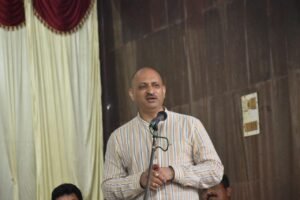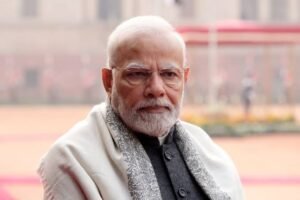A lodestar to steer the economy
“The BJP has not challenged or rejected Narasimha Rao’s 1991 architecture.”
Instead of critiquing Nehruvian socialism, the BJP should embrace the Rao-Singh economic architecture
There is anxiety all over about the economic slowdown in the country. While the government is still in denial mode, data flowing uninterruptedly into the public domain show that sector after sector is staring at a seriously challenging situation. Private consumption has contracted and is at an 18-quarter low of 3.1%; rural consumption is in a deep southward dive and is double the rate of the urban slowdown; credit off-take by micro and small industries remains stagnant; net exports have shown little or no growth; GDP growth is at a six-year low with the first quarter of FY20 registering just 5%; and unemployment is at a 45-year-high. The government, however, is yet to show signs that it has come to grips with what ails the economy. Much less evidence is available to believe that it has a strategic vision to address the challenges.
No economic road map
The problem is rooted mainly in the BJP’s inexplicable reluctance, over the years, to develop its own coherent set of ideas about the country’s economy. The rejection of Nehruvian ‘socialistic pattern of society’ was clear since the days of the Bharatiya Jana Sangh. The BJP’s advocacy of what can, at best, be loosely termed as a capitalist, free market framework remained untested in practice. The party’s economic ideology and its articulation were limited to mainly critiquing the Nehruvian model from the fringes of the political spectrum. The BJP’s flirting with Gandhian socialism did not last for more than a few months after its founding. In economic policy, the party mainly adopted ‘Neti Neti (Not this, Not this’), without articulating what was its own ‘Niti (policy)’.
The issues that catapulted the party on to the centre stage of the country’s political discourse and then to the seats of power both in the Centre and in various States had little to do with the articulation of an economic road map and its endorsement by the electorate. Nor did the economic direction the country ought to take figure as a serious point of debate and discussion at any point in the highest platforms of the party. So much so that when, for the first time, a dyed-in-the-wool non-Congressman headed the government from 1998 to 2004, no significant departures were initiated in economic policy. The party’s campaign pitch, ‘India Shining’, under the Vajpayee government failed to impress the voters. That was mainly because the people had not identified the party with any distinct economic philosophy or architecture that they could relate to. Therefore, it is not surprising that the development and economy pitch let down the party in the 2004 general election. The present leadership of the party is perhaps sharply aware of it. It took care not to offer the economic performance of its government as a claim for re-election. It instead chose, wisely, a muscular political, nationalist, security platform.
The Rao-Singh policy
The essential element in the present economic quandary is the BJP’s unwillingness to take its eye off the Nehruvian policy framework ball, which it continues to critique. That ball was taken out of the court in 1991 itself. The path-breaking repositioning ushered in by P.V. Narasimha Rao and his economic amanuensis Manmohan Singh remains unchallenged even today. Almost every political party that formed the government, took part in governance, or lent outside support to the government at the Centre since then embraced that repositioning. The Rao-Singh policy scaffolding remained largely unaltered in the last quarter century. The Congress came to terms with the repudiation of Nehruvian economics by erasing Rao’s memory from its organisational hard disk. But it still kept its connect with the 1991 shift by retaining Dr. Singh. It thus came to terms with the dismounting from the Nehruvian ‘commanding heights of the economy’. It did not flinch from anointing Dr. Singh as its Prime Minister in 2004.
A different turn
Yet the BJP continues to attack the Nehruvian economic framework. The party think tank fails to realise that the attack remains more a political assault and can never graduate to an economic critique. The agenda to construct an alternative to it or co-opt the one that was constructed did not become an urgent need. Constructs such as ‘Integral Humanism’ could not be rendered into practical policy initiatives in the modern market-driven, globalised world.
The BJP could, therefore, have released itself from that limiting agenda by wholly embracing and even owning the Rao-Singh economic architecture. Sardar Patel, the Congressman the Gandhi dynasty marginalised, could become an icon in the BJP’s political project. Similarly Rao, another Congressman detested and humiliated by the dynasty, could become a robust underpinning for its economic architecture. The BJP has not challenged or rejected Rao’s 1991 architecture. A full-fledged embrace and an aggressive pursuit of it even now could provide the BJP and the government led by Prime Minister Narendra Modi a lodestar to steer the economy out of the choppy waters it is in at present. That architecture could help the BJP remove the present infirmity in its economic thinking. Otherwise, macroeconomic thought leadership will continue to be offered to the BJP by the shouting analysts on television and in WhatsApp forwards.
Parakala Prabhakar is former Communications Adviser to the Government of Andhra Pradesh and is Managing Director of RightFOLIO, a knowledge enterprise based in Hyderabad,


